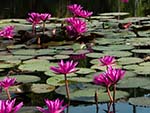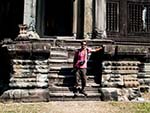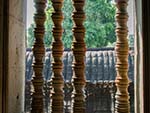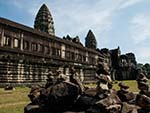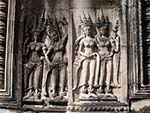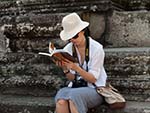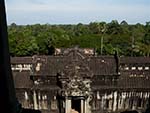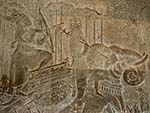Prior to our bus ride to Siem Reap, we decided to visit one of the sorrowing relics from Cambodia’s painful history. The Tuol Sleng Genocide Museum, formally a high-school, was converted to infamous Security Prison 21 during the Khmer Rouge rule.
The compound was disheartening and eerie, barred window rooms barely touched since their use, a single bed with iron shackles used to constrain the prisoners. Some rooms still had blood stained floors with even footprints visible.
Building B was quite emotional, a photo collage of the hundreds of men and women who were sent to Security Prison 21. Pol Pot was very detailed with documentation , for all prisoners who arrived at the prison, photos were taken of them. Some of the people were even photographed smiling, unaware of the horrors that they would be witness to.
Out of buildings B, C and D, building C was the only one left untouched to preserve the initial prison design. Barbed wire remains around the ground floor, stopped anyone from trying to escape, the large rooms were converted into tiny cells, less than a metre squared. The upper levels were the same, though this time separated by wood, a decision probably made due to the floor height already making it difficult to escape.
The last builder, D, was the most chilling, with sections of instrumentation used for torturing the prisoners. Two water torture apparatus can be seen, one used for water-boarding, and the other for water submersion. One of the final rooms housed a number of skulls of the victims.









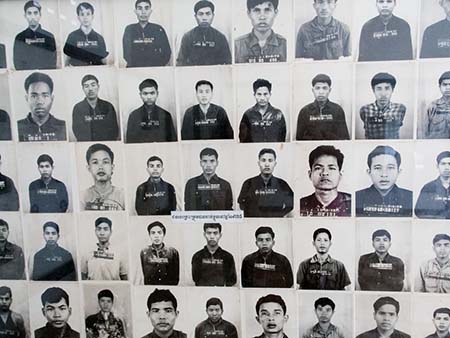
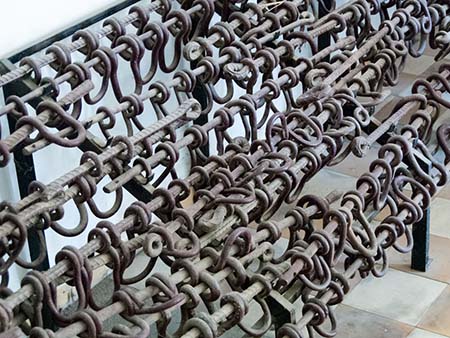











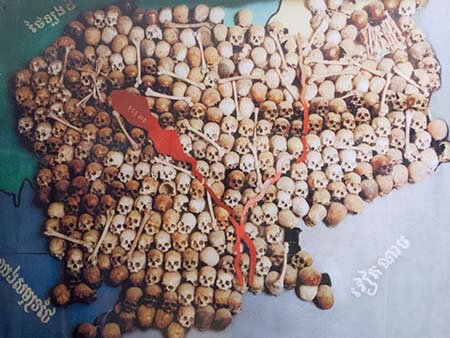

thydzikgooglemap(http://sonyaandtravis.com/maps/tuol-sleng-genocide-museum-phnom-penh-cambodia.xml,s)
At the entrance was a list of “The Security of Regulation”
- You must answer accordingly to my questions – don’t turn them away.
- Don’t try to hide the facts by making pretexts this and that – you are strictly prohibited to contest me.
- Don’t be fool for you are a chap who dare to thwart the revolution.
- You must immediately answer my questions without wasting time to reflect.
- Don’t’ tell me either about your immoralities or the essence of the revolution.
- While getting lashes or electrification you must not cry at all.
- Do nothing, sit still and wait for my orders, if there is not order, keep quiet, when I ask you to do something, you must do it right away without protesting.
- Don’t make pretext about Kampuchea Kromin order to hide your secret or traitor
- If you don’t follow all the above rules, you shall get many lashes of electric wire.
- If you disobey any point of my regulations you shall get either ten lashes or five shows of electric discharge.




































































































































